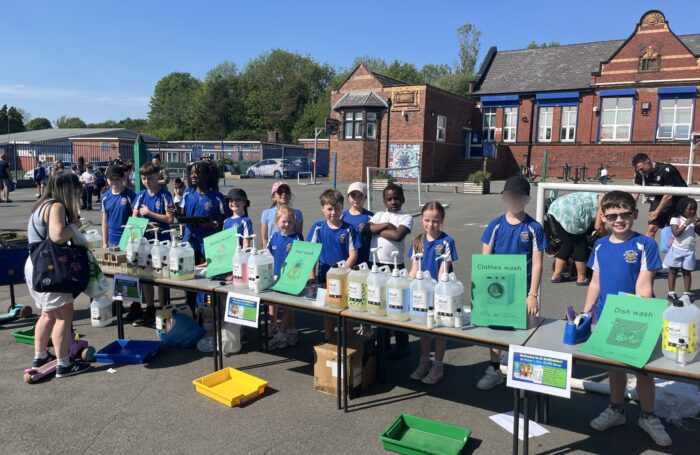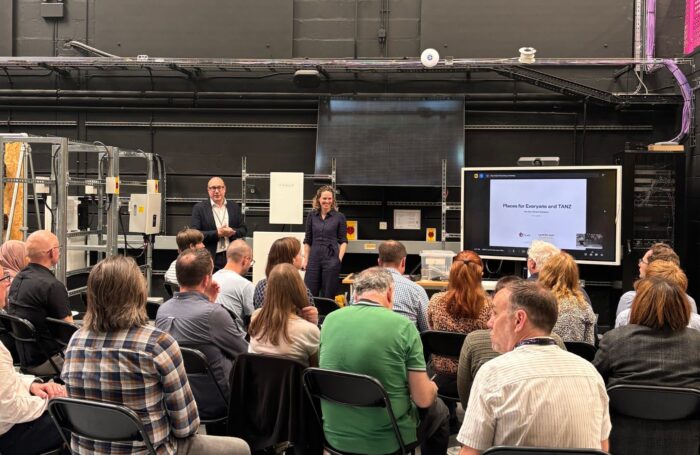Will Perrott, MD of Bolton manufacturer Clean Air Ltd, explains how his idea for an in-house ‘environmental committee’ has sparked a company-wide movement to become carbon neutral.
Established 25 year ago, Clean Air Ltd manufactures and installs fume cupboards, which are ventilated enclosures in a laboratory where harmful substances can be used. In 2019, managing director Will Perrott convened a special committee with input from each department to come up with ideas on how to become a more sustainable business.
The company now has an ambitious plan to reach carbon neutrality by 2023 and has been working with GC Business Growth Hub’s environmental business advisor, Rebecca Chedd, to maximise resource efficiency.
What inspired you to set up an environmental committee?
The motivation to do everything we can to become an eco-friendly company came from me originally. I was already investing personal money in things like forestry and solar panels on my roof, so the logical next step was to bring that environmental ethos into the company itself.
From the start I wanted to make sure that the whole company could participate, so we set up the environmental committee to get a representative from each department involved. I sent out an email for volunteers and was amazed by the response – we were oversubscribed and actually had to turn people down!
How does it work?
The committee is a mix of senior level and non-managers. There are six members including myself, the operations director, the marketing manager, the design manager and representatives from accounts, the shop floor and purchasing.
We met every month at first to get the ball rolling and now we meet every three months to monitor progress. Together we’ve come up with a huge number of ideas I would never have thought of on my own.
Where have you focused your efforts to date?
We’ve split our actions into separate themes: energy, vehicles, packaging, waste, supply chain, product design and communications. Energy and vehicle use are the two biggest contributors to our carbon footprint, so we’ve focused on these initially.
So far we’ve switched to LED lighting, made insulation improvements to our building and got internet access to our half-hourly meter data so we can closely monitor our energy consumption. Last year we also installed a 62kW solar system on our roof. We’re not a particularly large energy user – our peak consumption is actually around lunchtime when everyone is using the kettle and microwave! – but it means we can supply a high proportion of our usage even in winter and sell the rest to the grid.
Having solar power also means we can charge our cars for free as we upgrade them to electric models. We purchased our first mild-hybrid electric van in 2019 and have another currently on order, as well as an electric company car. By 2023 all our cars should be electric.
We’ve improved fuel efficiency by asking our van drivers to keep at or below below 70mph on the motorway. We monitor their performance and give out a prize at the Christmas party for the most efficient driver. As a result, the fuel efficiency of our vans has increased from around 25 miles per gallon to the mid-to-high thirties.
We’ve also reduced our transport simply through being smarter when planning jobs. One of our KPIs compares the amount of time our guys spend travelling versus the amount of time they spend working, which puts pressure on us to plan carefully and consolidate journeys where possible. We also encourage our customers to speak to us over Skype or Zoom to avoid unnecessary travel.
What actions have you taken elsewhere?
On waste, we’ve taken measures to increase re-use and recycling, especially with packaging, and changed our bins from one big skip into separate waste streams. That’s one of the only things we’ve done that’s actually increased our costs slightly, but I think throwing everything into one bin just sends the wrong message visually, even if it was being separated out by our waste contractor afterwards.
On the design front, we’ve measured the embedded carbon in some of our products to help identify ways to improve product and packaging design. This is something our customers aren’t yet asking about, but we fully expect them to in future.
We’re also putting a lot of effort into communicating our environmental ethos through our website and talking to customers. One example of this is educating customers about sulphur hexafluoride (SF6), which is used in testing the performance of fume cupboards. SF6 is one of the most potent greenhouse gases around, so we’re trying to minimise its use by raising awareness with customers and avoiding unnecessary testing.
What benefits have you experienced so far?
Nearly everything we’ve done is saving us money. Even our bigger investments are showing good financial returns. There’s also the employee engagement side. I know that my guys are happy working for a company that’s doing more for the environment. It will help us with recruitment too – younger people are so onboard with this agenda and they want to work for companies that match their values.
Then there’s the marketing side of things. When we speak to clients about what we’re doing they absolutely love it. We’re now starting to see interest from clients on how we can contribute to their environmental performance and demonstrate our role as an eco-friendly supplier. This is something we’re going to see more of and it’s nice to know that we’re well ahead of the game.
What’s next in your plan?
Phase one was to get our own house in order; now we need to focus on the impact of our supply chain. We already have some existing policies with suppliers around things like packaging use and consolidating deliveries, but eventually every supplier will have to provide us with their carbon footprint – which we’ll help them with if needed.
Ultimately, we can’t eliminate our entire carbon footprint on our own, so we’re planning to purchase forestry in the UK to offset our remaining emissions.
Looking further forward, we’re also thinking about how to adapt to climate change and rising temperatures in future. One way we’re mitigating this is by installing solar shades above our south-facing windows to reduce heat gain from the sun in summer months.
What advice would you give to other SMEs?
I would say the easy wins are absolute no brainers from a financial point of view. If you haven’t switched to LED lighting yet, do it tomorrow because it pays for itself in no time at all! Even with bigger investments like solar panels, costs have fallen so much in recent years that the payback is there even without subsidies or grants, and interest rates are low at the moment which helps.
We’ve found that using KPIs is a great way to get your whole team on board. Put a target out there and they will want to beat it. Monitoring is also key – lots of the improvements we’ve made would never have been identified in the first place if we hadn’t started collecting data on things like energy, water and fuel consumption.
Overall there’s nothing special about us as a business that others couldn’t borrow or copy. We’re more than happy to offer help and advice to other businesses out there – we even have an eco blog https://www.cleanairltd.co.uk/eco/ on our website designed to share our tips and ideas, although I’d recommend going to the professionals like Rebecca and her team at the Business Growth Hub first!



